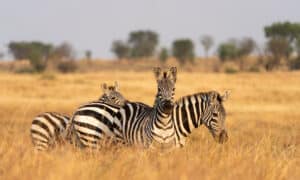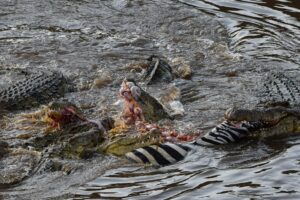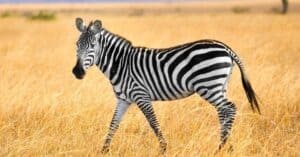Zebra Gives This Croc a Taste of Its Own Medicine!
Prepare for the adrenaline-pumping video below, which captures the perilous journey of a zebra herd crossing crocodile-infested waters. Amidst the chaos, a stroke of misfortune befalls one zebra as a crocodile seizes its back leg, initiating a ‘death roll’. The crocodile spins violently, aiming to rip off the zebra’s limb or force it off balance in the treacherous waters.
This Zebra Isn’t Going Down Without a Fight!
In a remarkable display of resilience, the zebra manages to escape the crocodile’s clutches, torn skin proof of an injury. Determined, the wounded zebra takes a few more steps forward, defying the odds.
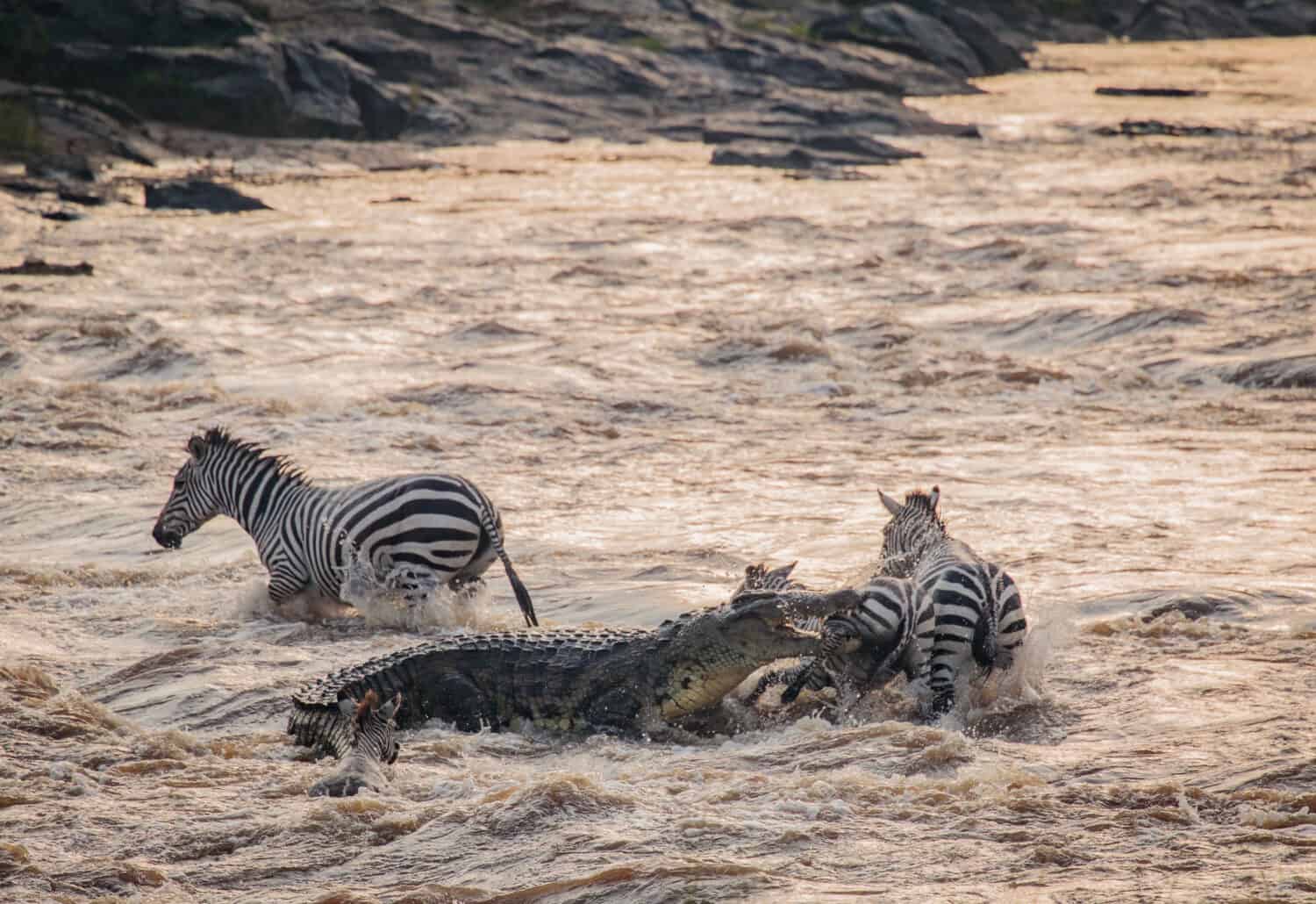
Herd animals such as zebras are very aware of the danger that lies in the river, but during migration, they have no choice but to make the perilous crossing!
©Sagar Smooth Photography/Shutterstock.com
However, exhaustion takes its toll, and the tenacious crocodile swiftly recaptures the zebra, preparing to ensnare it once more. Undeterred, the zebra refuses to give up. With a swift movement, it bends its neck backward, sinking its teeth into the crocodile, returning the favor with a taste of its own medicine.
The scene shifts to moments later, revealing the zebra’s neck locked in the firm grip of the crocodile’s jaws. The heroic struggle ends in disappointment as the zebra’s valiant fight proves futile against the relentless strength of its adversary.
The Peril of River Crossings Challenges Zebras and Other Migratory Herd Animals

Safety in numbers! When making river crossings herd animals generally make the move all at once, hoping to disappear in the crowd from potential predators!
©Mogens Trolle/Shutterstock.com
River crossings during migration pose significant dangers for zebras and other herd animals in their habitats. These treacherous passages test the animals’ strength, agility, and instincts for survival. For zebras, the perilous task of traversing crocodile-infested waters presents a constant threat. Swift and powerful crocodiles lurk beneath the surface, ready to seize any unsuspecting prey that ventures into their territory. In addition to zebras, other herd animals like wildebeests and gazelles face similar risks during river crossings.
The instinct-driven migration of these species brings them together in massive numbers, creating a spectacle of endurance and resilience. Together, they navigate through strong currents, contend with hidden hazards, and evade the relentless jaws of hungry predators, epitomizing the ongoing struggle for survival in the wild.
The Death-Roll: The Deadly Hunting Technique of Crocodiles

When a crocodile seizes its prey, it initiates a rapid and forceful spinning motion in the water.
©Robert Styppa/Shutterstock.com
The death roll, a menacing technique employed by crocodiles, serves as a deadly tool in their hunting repertoire. When a crocodile seizes its prey, it initiates a rapid and forceful spinning motion in the water. This violent rotation, known as the death roll, aims to incapacitate the victim by disorienting it or tearing off a limb. As the crocodile spins, its powerful jaws maintain a vice-like grip, ensuring the prey’s inability to escape.
This ruthless maneuver not only inflicts devastating physical damage but also disrupts the prey’s equilibrium, rendering it vulnerable to further attacks or drowning. The death roll represents a chilling demonstration of the crocodile’s extraordinary strength and cunning hunting strategy, cementing its position as a top predator in river ecosystems.
How Large Are Adult Zebras?
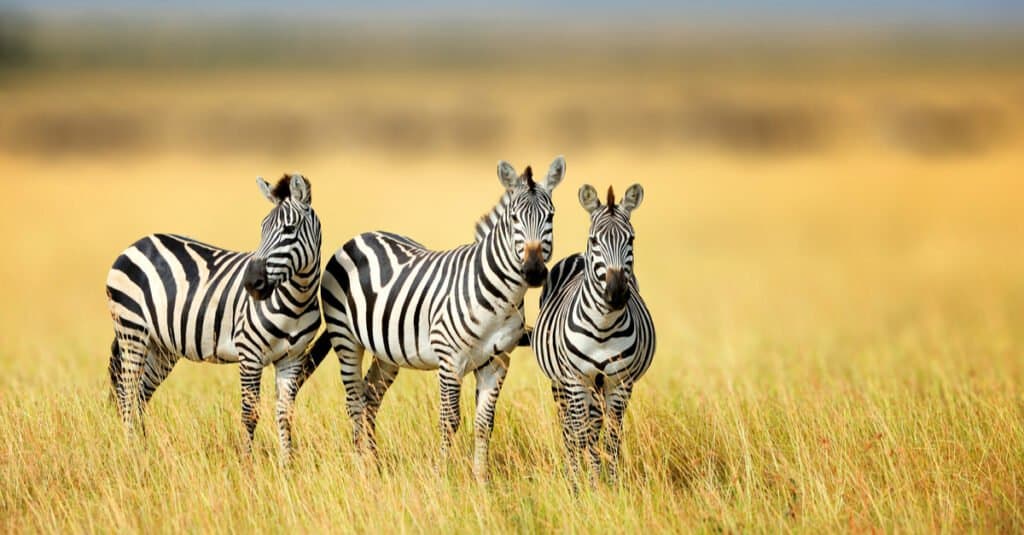
Zebra stripes are as unique as fingerprints and just like their size, each one is different. The largest of these is the Grévy’s zebra, which can weigh between 770 and 950 pounds.
©Volodymyr Burdiak/Shutterstock.com
There are three subspecies of zebras, the mountain, the plains, and Grévy’s zebra, and they are each sized differently but the largest of these is the Grévy’s zebra. This species has a height range of between four and five feet tall at the shoulder, can reach lengths of 7.5 feet or slightly longer, and generally weighs between 770 and 950 pounds.
The photo featured at the top of this post is © Roger de la Harpe/Shutterstock.com
Thank you for reading! Have some feedback for us? Contact the AZ Animals editorial team.




